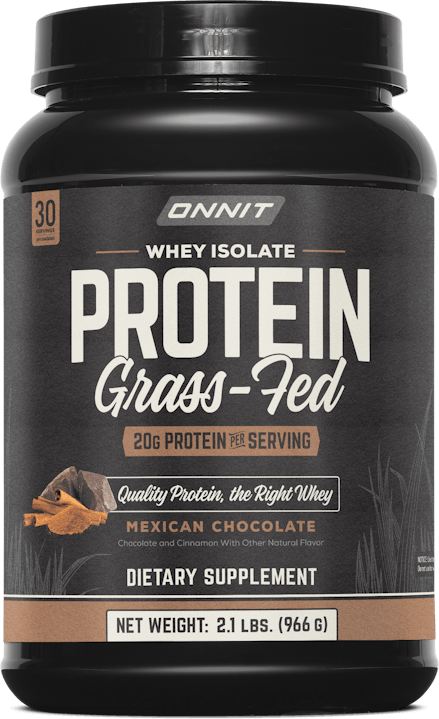How to Build Muscle as Fast as Humanly Possible.
That’s what this definitive guide is all about. Getting big, strong, lean and built like a badass.
It’s the summation of everything I have learned over the course of 25-plus years in the Iron Game.
The techniques I’m about to reveal helped me overcome horrible genetics and gain 47 pounds of muscle over the years. They’ve also helped thousands of my in-person and online clients achieve similar results.
If you work hard and smart, they’ll do the same for you.
But first the bad news…
If you’re a genetically average (or worse), “skinny-fat” dude who really struggles to gain strength, build muscle, and lose fat, I gotta tell you something…
You’ve been lied to.
You’ve been fed a bunch of crap about how to transform your body that’ll never work for guys like us.
I’m talking about all the typical nonsense you hear and read all the time like:
● You should do nothing else but the big power and Olympic lifts.
● You should always go heavy, no matter what.
● Isolation exercises are useless.
● You should always do full body workouts.
● Circuit training is the fastest way to get ripped.
● Crunches and cardio give you a six pack.
● You have to eat 6-7 meals a day.
● You should eat 2 grams of protein per pound of your body weight.
● Carbs are the devil.
● You have to buy this supplement or take that drug to build muscle.
All total and utter bullshit.
The only thing you’ll get from following that advice is a laundry list of nagging injuries and an overdraft of your checking account. I should know. Been there and done that.
Because I don’t want you to have to waste all the years and money that I did (not to mention the surgeon’s bills), I came up with a method of training and eating specifically for skinny-fat, injury-prone hard-gainers: guys who historically can’t gain muscle doing the workouts they find in magazines or on blogs. It’s also perfect for all guys over age 35 who need to be smarter with their training as they age.
I call it the Renegade Method, and I’m going to lay out the rules for it below.
The Renegade Method has been tested on thousands of trainees, both at my private gym and online. It’s been tweaked, retooled, upgraded and perfected.
And why should you trust me?
I’m a genetic misfit when it comes to building muscle. I was frail and weak for the first 20 years of my life. I tried every training system, diet, and supplement imaginable over the last three decades. I found what worked, kept it, and got rid of what didn’t.
The result is an all encompassing training and lifestyle plan that is guaranteed to build size and strength without the typical injuries, burnout, and plateaus that most programs result in.
If you’ve followed my blogs, podcasts, and social media long enough, you’ve seen the incredible transformations my clients have made and the features in Men’s Health, Men’s Fitness, Muscle and Fitness, ESPN, and CBS, so you know this stuff works.
The Renegade Method is designed specifically for the average, busy guy and hard-gainer who wants to get built like a badass but…
● Don’t have a lot of time.
● Isn’t on steroids and performance-enhancement drugs.
● Doesn’t have great genetics for building muscle and strength.
● Is sick of getting injured from workouts and feeling like crap all the time.
Now, I’m not gonna make you an outrageous promise, like gains of 84 pounds of muscle in the next month or something. You’ve still gotta be patient and put in time. But you’ll see some results within a few weeks on this plan, and big results in a few more months.
If you follow the program and put in the work, you’ll get the results. Don’t bail after a few days because your arms aren’t an inch bigger. People who cop out like that are sheep. They can’t get anywhere in life.
If you follow the program and put in the work you’ll get results. But the reality is most people won’t even finish any training program that they start. They’re too mentally weak. They’ll keep looking for shortcuts and an easier way. Those people are sheep. They can’t get anywhere in life.
Don’t be a sheep. Be a fucking lion.
Now, without further adieu, here are the rules of my Renegade Method. The ones you must follow to get jacked, strong, and powerful—as fast as your body will allow.
Rule #1: To Build Muscle, You Have to Get Strong
You can’t expect to transform your physique by doing the same workouts over and over. You have to force adaptation to occur. The easiest way to do that is by adding weight to the bar. Get stronger, primarily in the range of 5–10 reps, and you’ll get bigger.
Training heavy will always deliver better results than training light. That’s just common sense. The more weight you use, the more muscle fiber you can activate.
How do you know you’re getting stronger? By regularly setting PRs (personal records).
Pick a few key exercises that together train the whole body. Presses, chinups, rows, and squat and deadlift variations are the best choices (more on these in Rules #2 and #3). Write down how much weight you can currently do for 5–10 reps on each of them, and, over the next few months, work your way up to where you can either add 10–20 pounds to each of those lifts or do 3–5 more reps with the same weight. That’s how you force your body to grow.
When you get to the higher end of the rep range, add weight and start over with 5 reps again. Simple, but brutally effective; no advanced calculus degree required.
The bottom line is to get big you have to get strong.
Rule #2: You Have to Use Compound Muscle-Building Exercises
The exercises that allow you to use the greatest amount of weight are the ones that help you build muscle the fastest. These also happen to be the lifts that allow for the greatest percentage of increases in loading. We’re talking compound (multi-joint) exercises here, done with free weights. You’re not going to grow at nearly the same rate with a workout comprising machine exercises and isolation movements.
You have to overload your body with big, manly, testosterone-producing lifts. There’s no way around man.
The best compound weight-training exercises for building muscle are:
● Military (Overhead) Presses – done with a barbell, dumbbell, kettlebell, or log.
● Low-Incline Presses – barbell or dumbbell. I like the bench to be set higher than flat but not as high as 45 degrees. Around 30 degrees is good. This will help protect your shoulders, which are at a greater risk for injury during flat bench presses.
● Squats – back, front, safety bar, Buffalo bar, belt.
● Deadlifts – conventional, sumo, trap bar, Romanian, rack.
● Rows – 1-arm dumbbell, chest supported, landmine.
● Loaded Carries – This can be a farmer’s walk or carrying a sandbag or stone in several positions: bear hug, carried in the bend of your elbows (Zercher), under the chin (racked position), or shouldered.
● Weighted Sled Work – pushing and dragging a sled or Prowler.
Get strong on those exercises, slowly adding weight and reps.
When you can load impressive numbers on those lifts for sets of 5–10 reps, you’ll be one big-ass dude.
Rule #3: Complement the Big Lifts with Body-Weight Exercises

Big compound barbell and dumbbell lifts lay the foundation, but you’ll need more than that for a well-rounded physique and injury-free training over the long haul. Those exercises should be complemented by an equal amount of muscle-building, body-weight exercises, like:
● Chinups
● Dips
● Single-leg squat and lunge variations
● Pushup variations
● Inverted rows
● Plank variations
● Glute-ham raises
Body-weight training builds core strength and stability throughout your body. It’s also easy on the joints, allowing you to blast muscles without straining the connective tissues that they act on.
The combination of big lifts and body-weight exercises will produce an athletic, balanced, muscular physique that performs for the long haul.
Rule #4: To Build Muscle Safely, You Have to Use Perfect Technique
Yeah, this should go without saying, but walk into any public gym and you’ll find that it’s rarely the case. People will lift with any form that allows them to get the weight up, but that doesn’t mean they’ve done a good rep. The perfect set has several components to it. Here’s what you need to do:
● Get tight from head to toe before you lift. Squeeze the bar (or other implement) like you’re trying to crush it. If you’re doing a standing exercise, be sure to squeeze your glutes and brace your abs. Total-body tension creates stability, which makes for stronger, safer lifting.
● Control the lowering or (eccentric) portion of the lift. It helps you control the weight better for safety and creates more damage in the muscle, which contributes to muscle growth. A review in the Journal of Strength and Conditioning Research indicates that eccentrics should generally take 2–4 seconds to perform.
● Let the muscle stretch in the bottom position, but don’t go so deep that you feel pain. You shouldn’t feel any joint stress, either.
● Start the positive (concentric) portion of the lift by forcefully contracting the target muscles. So, if you’re pushing up from the bottom on a dumbbell bench press, squeeze your pecs first.
● Don’t use excessive momentum. Lift with your muscles, not the stretch reflex. No bouncing reps.
● On big barbell exercises, you should lock out at the top and reset for the next rep. Don’t try to pump out your reps fast.
● On body-weight and dumbbell exercises, you should stop just shy of lockout at the top and immediately reverse the direction. Think constant tension and continuous movement.
Rule #5: Train with the Optimal Amount of Volume to Build Muscle
I said above that you want to spend most of your time getting stronger in the range of 5–10 reps. For younger guys who really want to push their strength gains, 5–8 reps is ideal.
If you’re over 35, or after you have trained properly for a couple of years, you can bump the reps up a bit and start doing more sets of 10–12 reps in addition to 5–8.
When you get more advanced, or you’re over 40 years old, you will want to spend a bit more time in the 8–12 rep range and less in the 5–8 range, simply to protect your joints from the heavy loading and reduce injury risk.
For most intermediate guys, and myself, I like mixing low and high reps in for the same exercise. So, after you get some heavy work in on a lift, do a few sets of slightly higher reps and get a pump.
When you’re doing higher reps, focus on the muscle you are trying to build and squeeze every ounce of effort out of it. Yes, cheesie as it may sound, visualizing the muscles working and growing while you train them can be helpful. A 2016 study in the European Journal of Applied Physiology found that, when lifters thought about their pecs and triceps during a workout, they activated them better.
If you have been training properly for at least three years, you’ll find that advanced pump-enhancing techniques like rest-pause sets, drop sets, and some of the other old-school bodybuilding techniques you’ve no doubt heard of can be effective when used sparingly. Just be sure not to overdo the use of them. And never get away from the most important rule: setting PR’s to get stronger.
While the number of reps you do per set is important, of equal importance is the total number of reps you do per muscle group. The National Strength and Conditioning Association has determined that, to maximize growth, you need approximately 20–70 total reps per muscle group. Depending on which end of a rep range you’re working, this can be done in one session or over a few days (a training week, for instance), but that’s the spread you need to cover to see gains.
That means that if you’re doing 6 reps per set, you need to do at least 3 total sets—and upwards of 12—for that particular muscle group.
I always recommend starting on the low end of the scale. Only increase volume when you absolutely need to. So, if you’re training chest, you could do 6 work sets of dumbbell bench presses to start out, breaking down to two sets per workout for three sessions per week. You can gradually add sets from there, experimenting with different training splits that will allow you to get in more volume without overtraining (we’ll discuss training splits next).
As you get more advanced, you can alternate phases of both lower and higher volume through a properly periodized training program.
Rule #6: Train With the Proper Muscle-Building Workout Split

First of all, you don’t need to train six days a week like a bodybuilder. Three to four hard strength-training days per week is perfect for most steroid-free, genetically-average, busy people.
The best training split is one that allows you to:
● Recover properly.
● Make the greatest strength gains.
● Spare your joints and spine.
The frequency with which you train each muscle group generally decreases as the number of years you’ve been training increases.
Beginners:
If you’re a beginner, you should train with three full-body workouts per week. In each one, do a compound pushing movement (like a bench press), a compound pulling movement (like a chinup), and a compound lower-body exercise (squat, trap-bar deadlift, for example). If you want to add in 1–2 other exercises like loaded carries or kettlebell swings as a finisher, that’s fine, but three exercises is enough to work the whole body.
A 2015 study in the Journal of Strength and Conditioning Research found that subjects who did full-body sessions three times per week gained more arm size than another group who did a body-part split, hitting each muscle just once.
Intermediates:
If you’ve been training longer than 6–12 months, you can split your workouts into upper- and lower-body days. The most common setup is to train upper body one day and lower the next so that each area gets trained twice in one week. If you train four days per week, you can train upper body on Monday, lower Tuesday, rest Wednesday, and then do upper body again on Thursday, lower body on Friday, and then rest on the weekend.
You should still rely mainly on compound lifts, but adding some isolation work—such as lateral raises for the shoulders and dumbbell curls for the biceps—is acceptable.
If you train three days per week, you can rotate upper- and lower-body days every time you train. It could look like this over the course of two weeks:
Week 1
Monday: Upper body
Wednesday: Lower body
Friday: Upper body
Week 2
Monday: Lower body
Wednesday: Upper body
Friday: Lower body
I can’t recommend this rotating upper/lower split highly enough. I have made incredible gains on it, as have hundreds of clients I have worked with personally, and thousands of others online.
If you train three days per week and prefer to have set training days each week instead of rotating them, here is what I suggest…
Do a heavy upper-body day on Monday, legs on Wednesday, and then a lighter upper-body day on Friday where you bump up the reps slightly and use exercises that aren’t quite as stressful. So instead of a barbell incline press for sets of 5–6 reps, you might do a dumbbell incline press or weighted pushup on rings for sets of 8–12 reps.
Advanced:
An upper/lower split can last you forever. A lot of massive, strong powerlifters stick with that throughout their entire lifting careers. However, if you’re older and/or have some trouble recovering, you may prefer a push/pull/legs split that has you training everything directly once per week. This is how most famous bodybuilders have trained in the past and many still do.
You could do exercises for chest, shoulders, and triceps on Monday, exercises for back and biceps on Wednesday, and exercises for legs on Friday. If you want to do an arm or “beach muscles” day on Saturdays, you can extend it to a four-day per week program.
Most typical bodybuilding programs have way too many sets and reps and use the wrong exercises. However, if you lower the total volume, go heavier, and use compound movements as I’ve outlined above, there is nothing wrong with a body-part split for advanced lifters. In fact, it’s often less stressful to the joints than your average upper/lower split.
As far as the frequency goes, training a muscle group once every 5–7 days is actually safer and more effective for advanced lifters than training it two or three times per week.
If you want slightly more frequency, there are ways to do it without adding more workouts. You can add a lighter set or two of work for a muscle group you need to bring up on days other than that muscle’s main training day. For instance, if you want to target your arms, you can do one or two sets of dumbbell curls to start off your leg days.
Rule #7: “Stimulate, Don’t Annihilate”
This is a quote from eight-time Mr. Olympia Lee Haney. It means you should train hard but smart.
Don’t kill yourself in the quest to get big and strong. When you leave a little in the tank, both at the end of each set and each workout, you increase your chances of making progress.
Don’t take sets to the point of failure—where you absolutely can’t perform another rep. You should never get to where you’re turning purple and screaming like you’re getting interviewed by “Mean” Gene Okerlund before WrestleMania. Most of the time, you want to end your sets two reps before total failure. Not sure when that is? The moment your form breaks down, or you’re pretty sure it’s going to break down, end the set.
A great analogy that I like is that the balance between training and recovery is like digging a hole. Each time you lift, you dig yourself deeper and make it harder to climb out of the hole. To get back out again, you have to fill in the hole to return to ground level, and the only way to fill it is with food and rest. If you overdo it in the gym by pushing too hard, you won’t be able to train as often or at a high capacity. Eventually, you’ll get injured.
Rule #8: Keep Your Conditioning Up

Doing cardio does NOT make you small and weak, even if you’re a skinny hard-gainer to begin with.
Skipping conditioning work, however, WILL make you a lazy, out of shape, fat ass. Conditioning helps you stay lean and athletic, and it improves your recovery between strength training sessions. It’s hugely beneficial and has to be a part of your weekly routine.
My favorite type of cardio? High-Intensity Interval Training (HIIT). It’s been proven to be extremely effective at burning fat and boosting conditioning levels while preserving muscle mass.
You should still do a minimum of one 15–30-minute HIIT workout per week even when you are trying to build muscle as quickly as possible. If you are trying to lose body fat, you should do 2–3 HIIT workouts per week.
To do HIIT properly, choose an exercise (or series of them) and go just shy of as hard and as fast as you can for 30–60 seconds. I actually prefer going about 90–95% of your maximum effort for the sake of safety. Then you coast/cruise (or rest, depending on the exercise) for 60–120 seconds. Repeat the sequence for 15–30 minutes, total.
My favorite exercises for HIIT workouts are:
● Sprinting up hills.
● Sprinting while pushing or dragging a weighted sled.
● Sprinting on a bike with the resistance cranked up.
● Kettlebell swings or snatches done for high reps.
● Jumping rope.
● Swimming.
● Rowing (if your back can tolerate it).
In addition to the HIIT sessions, it’s always a good idea to go for a 30–60-minute walk as many days per week as you can. I recommend getting a minimum of 10,000 steps every day. Use a phone app to track them. If you’re into jogging, swimming, hiking, or some other form of long-duration, fairly low-intensity cardio, that is fine to do as well, and as often as you like.
Rule #9: Make Recovery a Huge Priority
Training is just the stimulus for growth to take place. You can train your balls off all day, every day, but you won’t grow from that alone.
You grow outside of the gym when you’re recovering; not during workouts. If you can’t recover, you won’t grow. Plain and simple.
So how do you ensure that you will recover properly from workouts?
By adhering to the following:
● Don’t do more than you can handle in the gym.
● Don’t train much more than an hour at a time.
● Don’t use extreme levels of psyche on every set.
● Keep your stress under control.
● Getting 8-9 hours of sleep every day.
● Meditate.
● Doing at least 15–20 minutes of mobility and self-myofascial release work (like foam rolling) per day.
● Doing some low-intensity conditioning and/or yoga (or other stretching exercises) on off days.
● Taking contrast baths and showers.
● Getting a massage once a month or as often as you can afford to.
Rule #10: Eat For Health and Longevity First and Foremost, and to Gain Muscle Second

No matter how skinny you are, you should never follow an all-you-can-eat diet, gorging on whatever you can get your hands on (including junk food) for the sake of gaining weight. It’s unhealthy and makes you fat.
The healthier you are, the faster you will make progress.
You have to fuel your body with high-quality, real, wholesome food. Eating pizza, burgers, ice cream, and fast food just because it’s high in calories is a really bad plan. You’ll feel terrible, and while the extra calories will help muscle gains to an extent, most of them will turn to fat. It’s not worth it. Your recovery will be slower and you will be riddled with inflammation.
Your diet should consist mostly of the following foods:
● Grass fed meat.
● Organic eggs.
● Wild-caught fish.
● Starches like white rice, potatoes, and quinoa.
● Nuts.
● Fruit.
● Veggies.
● Water.
You don’t have to count calories to put on muscle. Many people find it easier to just track macros (intake of protein, fat, and carbs) based on their body weight.
Eat around one gram of protein per pound of your body weight each day. That’s more than enough. You could probably get away with less, but one gram per pound is a safe target to maximize muscle mass.
Eat 0.4–0.5 grams of fat per pound of your body weight. Fat is essential for hormone optimization, brain function, and joint health. Now, if you’re following a ketogenic diet (or modified keto diet), or you just feel better with more fat in your diet, you can certainly add more fat and lower your protein and carb intake to accommodate it. The 0.4–0.5 grams per pound recommendation just represents a starting point and a minimum so that you don’t eat too little fat, either out of fear that it will make you fat or damage your heart (both untrue). For more about ketogenic diets, see Onnit’s guide HERE.
Eat 1.5–3 grams of carbs per pound of your body weight. As with fat, this amount can vary greatly, depending on your personal needs and preferences, so consider these numbers only a starting point. If you’re very skinny and feel that you handle carbs well (i.e. you can eat a lot of them without getting fat), go ahead and eat according to the higher end of the spectrum. The same applies if you’re desperate to gain weight—you should increase your carb intake. If you’re prone to weight gain or feel lethargic on higher carbs, you should eat fewer of them. Again, see our keto guide for more details and options.
For the sake of mental focus, it’s best to keep any carbs you eat low during the day when you’re working and active and get the lion’s share of them at night with dinner. A typical breakfast could include eggs, yogurt, and fruit, or a shake, and lunch could be meat or fish and steamed veggies. For dinner, have meat or fish again, along with sweet potatoes or rice, and vegetables.
Don’t make the mistake of trying to bulk up when you should be on a diet. While you might have muscle on your mind, most people need to get leaner first. If you’re fat and you start eating for size, you’re only going to get fatter. Get rid of the excess blubber first, to the point where you can see some abs, and then worry about getting big. You should be as low as 12% body fat before you change your diet up to focus on mass gain. That will ensure that your insulin sensitivity is high. When it is, you can eat more carbs and your body won’t store them as fat.
Bonus Rule: Consistency Is King
All of the above information is completely useless if you don’t apply it consistently. I’m not talking about a week. I’m not talking about two months.
The person who makes the greatest progress is the one who is consistently getting in 3–4 workouts per week. The guy who never misses a meal, always gets to sleep on time, spends a few hours per week on recovery techniques at home, and repeats the process 52 weeks per year, year after year. That’s how real progress is made.
You have to commit and you have to believe in what you are doing. You can’t be second-guessing everything all the time. You can’t change your routine every other week. You can’t be on the internet constantly searching for a better program.
There is no magical supplement or yet-to-be-discovered secret training technique that will help you build 100 pounds of muscle in the next three months. Those things will never exist.
The only things that get results are passion, commitment, and hard work. Every damn day.
Lift weights. Eat steaks. Run hills. Sleep. Repeat.


)






